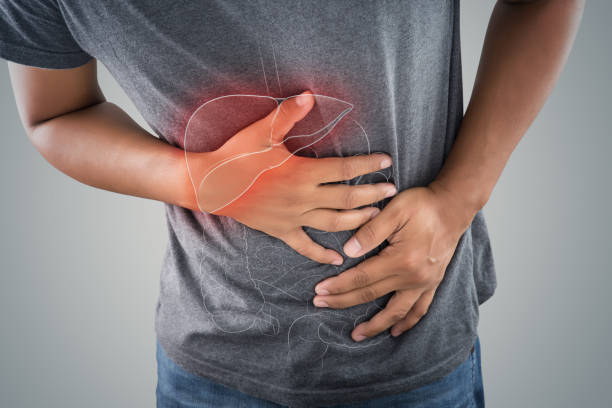you unsure of what that means? Well, stick around, and I'll answer all your questions about what fatty liver disease is and what it means for your health. You may have been told you have fatty liver disease based on imaging or lab work.

But what is fatty liver disease? Fatty liver disease is when an increased amount of fat is deposited in the liver. In the medical field, you may hear several terms to describe fatty liver disease, including NAFLD (non-alcoholic fatty liver disease) or NASH (non-alcoholic steatohepatitis).
To better define the disease, the AASLD (American Association for the Study of Liver Diseases) has come up with new terminology. Fatty liver disease is now called steatotic liver disease or SLD, a general umbrella term for the different types of fatty liver disease. NAFLD is now called metabolic dysfunction-associated steatotic liver disease (MASLD). This occurs when there is fat in the liver with at least one cardiovascular risk factor, such as being overweight, having elevated fasting glucose, elevated blood pressure, or abnormal triglycerides or cholesterol. NAFLD has minimal inflammation.
NASH, on the other hand, is now termed metabolic dysfunction-associated steatohepatitis (MASH), involving significant liver inflammation. Although the new terms can be confusing, we'll use the old ones since they are still commonly recognized. Essentially, NAFLD involves fat in the liver with minimal inflammation, and NASH involves fat with significant inflammation.
Why Should We Care About Fatty Liver Disease?
Understanding fatty liver disease is crucial due to its serious health implications. Here are four key points to consider:
-
Increased Risk of Heart Attack and Stroke: Fatty liver disease significantly impacts cardiovascular health. Studies have shown that individuals with fatty liver disease have an increased risk of death from cardiovascular events like heart attacks or strokes, as well as death from any cause, up to six times higher than those without the disease. Therefore, regular cardiovascular exercise is highly recommended for those diagnosed with fatty liver disease. While diet changes have a greater effect on weight loss, cardiovascular exercise improves heart function and has numerous benefits for overall health, including lung function and mental health. It’s important to note that physical jobs with stop-and-go activities do not count as cardiovascular exercise. Sustaining an elevated heart rate for at least 30 minutes is essential.
-
Risk of Liver Cirrhosis: Fatty liver disease can lead to liver cirrhosis, a permanent scarring of the liver that impairs its function. Although viral hepatitis and alcoholic liver disease are the most common causes of cirrhosis globally, the need for liver transplants due to fatty liver disease is rapidly increasing. Within the next decade, fatty liver disease is expected to become the leading cause of liver transplantation. Those with NAFLD have a 1-3% risk of developing cirrhosis, while those with NASH have an 11-13% risk. NASH progresses to cirrhosis twice as fast as NAFLD. Preventing the progression of fatty liver disease is crucial, as both conditions are associated with elevated cardiovascular disease risks.
-
Importance of Weight Loss: Losing at least 10% of body weight can significantly improve liver inflammation and may even reverse liver scarring. Studies have shown that losing 7% of body weight results in 90% of individuals with NASH experiencing improvement, with 45% showing reduced liver scarring. The degree of weight loss directly correlates with the reduction of fat and inflammation in the liver. Although weight loss can improve scarring in NAFLD and NASH, it is not as effective in reversing cirrhosis. Preventing further worsening of cirrhosis through weight loss is key. Besides weight loss, other treatments are available.
-
Medications and Surgery: In addition to diet changes and cardiovascular exercise, medications and surgery can aid in the treatment of fatty liver disease. Bariatric surgery is an option for those struggling to lose weight through lifestyle changes alone. Studies have shown a three to four times greater chance of NASH resolution with bariatric surgery compared to lifestyle modifications alone. However, surgery is not suitable for everyone, and the risks must be discussed. Medications like Vitamin E can improve liver enzyme levels and inflammation in the liver, though not liver scarring. Diabetic medications such as pioglitazone have been shown to help, but they come with risks like bladder cancer and weight gain. Newer medications, such as GLP-1 agonists like Ozempic, have shown promise in treating NASH, though further studies are needed.
Conclusion
Fatty liver disease is a serious condition with significant health implications. Early identification and proactive management, including lifestyle changes and medical interventions, are essential.









